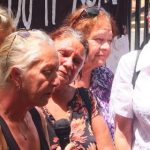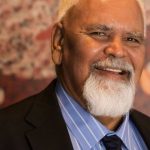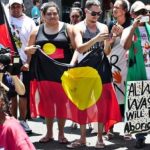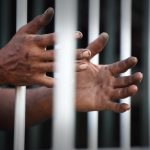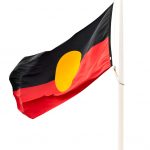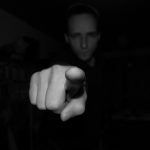Aboriginal Resistance is Mounting: An Interview with FIRE’s Laura Lyons
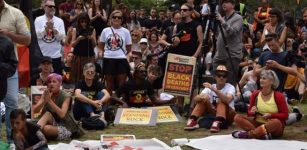
Over recent years, there’s been a resurgence of Aboriginal and Torres Strait Islander resistance movements. Localised Indigenous groups have reached out to others across the country, forming a network united under the common causes of treaty, sovereignty and decolonisation.
This unity could be felt on March 19 2015, when around 18,000 people turned up at rallies across Australia in a national day of action to protest the Western Australian government’s proposal to close up to 150 remote Aboriginal communities.
The fight against the stolen generation
Grandmothers Against Removals formed in early 2014 to campaign against the forced removal of Aboriginal children from their homes, which is now referred to as the ongoing stolen generation.
As of November last year, there were 15,000 Indigenous children living in out-of-home care in Australia. Aboriginal and Torres Strait Islander children are nine times more likely to be forcibly removed from their families, than non-Indigenous children.
First Nations groups from around the country converged at the Brisbane Aboriginal-Sovereign Embassy in July 2014 to form a national stop the stolen generations movement.
Resistance at the Block in Redfern
A fierce example of local Indigenous resistance was the Redfern Aboriginal Tent Embassy. Led by Jenny Munro, the embassy camped out for over a year on an area of land known as the Block, which has been the heart of Sydney’s Aboriginal community for decades.
The protesters were mobilising against the Aboriginal Housing Company’s redevelopment plans. At the time, there was funding for the Pemulwuy Project’s commercial and student housing components, but there was none for the proposed 62 affordable houses for Aboriginal people.
The protest was victorious. Australian Indigenous affairs minister Nigel Scullion committed $5 million in funding to the project’s Aboriginal housing.
Protesting Invasion Day
There’s been renewed vigour behind Invasion Day protests of late and much of this is to do with the groups organising the events.
Behind the Melbourne protests is the Warriors of the Aboriginal Resistance (WAR). Formed in November 2014, the youth group officially launched during the protests held against the G20 summit in Brisbane.
And more recently, the Sydney-based group Fighting In Resistance Equally (FIRE) has stoked the flames of protest in this city. The movement was the organiser behind this year’s Invasion Day rally.
Thousands turned up to the Sydney march in January. It was the biggest turn out to an Invasion Day protest since the 1988 rally, which coincided with the bicentennial. “That is not a day to celebrate,” Ken Canning, a member of FIRE, told the crowd. “This was an invasion and it’s still going on today.”
Fighting in resistance equally
Formed in September last year, FIRE is an amalgamation of different campaign groups. It’s led by Indigenous people, but it’s a multicultural organisation. Wiradjuri woman Laura Lyons is the founding member of the group.
Sydney Criminal Lawyers® spoke with Laura, the spokesperson for FIRE, about the continuing struggle of the nation’s First Peoples and the need to stand united against the government.
So firstly Laura, who is FIRE?
FIRE is a multicultural group. It’s made up of members of society who have their own campaigns set up and functioning to fight for basic human rights.
It’s a group that’s been formed between different cultures. And it’s led by Aboriginal people.
And there’s a focus on Aboriginal issues?
Exactly.
So it’s an amalgamation of groups such as the local division of Grandmothers Against Removals?
Yes that’s correct. So you’ve got Grandmothers Against Removals and the Indigenous Social Justice Association.
How did you initially organise?
I just put a call out. I went and approached people from different campaigns. I first of all approached people that have already got campaigns set up and were leading them. So I just ran my idea by them to see if they were interested in my proposal.
By contacting other leaders, they were then able to put the word out. Then I organised the venue and the day to meet. We had our first meeting at the Redfern Community Centre and that was where we introduced ourselves and spoke about what campaigns we were representing.
I put forward my proposal as to why I thought it was important that everybody unified.
I thought it was important because we could have more power and make more of a difference if all the campaigns joined together. And in doing that we’d all have equal platforms, as well as the capacity to support each individual campaign.
What’s the main message FIRE’s trying to put across?
The main message is that we’re fighting to make change under this current government, and under any future governments. People’s basic human rights are being breached and that’s why they’ve all got their individual campaigns.
Thousands of people turned up to the Invasion Day protest this year on January 26. FIRE was the organiser of the event.
That was a lot of hard work. We were dedicated because one of our goals is to build up momentum and unify more and more people as we go along.
So we started off with the International Human Rights Day rally, which was held on December 10, 2016. That was the very first project that we undertook as FIRE. Then we went to the Invasion Day rally.
And what would you say is the significance of the Invasion Day march?
That sends a clear message out to especially Aboriginal people that it’s OK to come out and fight for what you believe in. It’s OK to fight for our rights.
It’s OK to stand with other nationalities, who are supporting us to not celebrate the frontier wars and the massacres. That’s not a day for any Australian to celebrate.
During the protest, Birrugan Dunn-Velasco, singer of Dispossessed tried to set an Australian Flag alight. And the peaceful protest momentarily turned violent, when police responded by pushing through the crowd and wrestling him to the ground.
What did you think about the reaction of police to this young man’s statement?
Birrugan is one of our strongest warriors, as a part of FIRE. And Birrugan has a right as an Aboriginal man to express what he’s feeling and what he’s living through each day.
He has a right to express his struggle. He’s engaged in fighting to survive in this country every day of his life.
The violence did not come from that. It didn’t become violent until the police started to push through the crowd. They were kicking people out of the way. They were knocking people to the ground. Because all they were focused on was trying to get to Birrugan to stop him lighting the flag.
The flag wasn’t lit, everybody knows that. He never got the opportunity.
FIRE issued a statement several days after the march stating that you recognised “this is part of a renewed surge in resistance across the country to the intensifying oppression of Aboriginal people.”
So Indigenous Australians are mobilising with renewed energy. What do you think has to happen in order to keep this vitality going and to strengthen the fight?
What we’re trying to do is get out there and spread the message and mobilise our people. There’s an old saying, it’s like what happened to me, when my grandchildren were forcibly removed, a fire ignited in my belly.
As you’re aware, we weren’t out there doing the campaigning. We’re fresh new faces. We had different visions to what other people had.
We need to mobilise our people. Get our people off their lounges and out of their little bubbles. Our people are full of fear and so oppressed that they don’t have the energy to fight what’s happening to them on a day to day basis.
It comes back to the racism. It comes back to the history. We’re about raising awareness and asking all these other nationalities to come on board and walk this journey with us. This is a journey about change. This is a journey about trying to change this country.
And we need to stand together for that to happen.
The rally also had a focus on raising awareness about the forced removal of Aboriginal children. It’s been reported that more Indigenous children are being taken from their homes today, than at any other time in Australian history. NSW has the highest number of child removals in the country.
Can you tell us about why this is occurring? And how this is affecting the community?
This is a form of genocide. This system of removing our children. This system that used to be known as DOCS, but is now FACS, has been invented and set up by the Australian government.
The stolen generation hasn’t stopped. They’re removing children under their current policies.
Now they don’t follow their own legislation. They’ve got the Bringing Them Home report. They’ve got the recommendations.
When my children were removed, my children were supposed to go straight to family. That enables them to continue to have contact and connections with family. Connections with culture and community. And also country.
My children were removed on a Friday afternoon at 3 o’clock from school. They were taken straight to what they call a residential care facility. So my children didn’t have that option. My children weren’t placed with family.
This is a breach of their own legislation.
We have found that this is a big system and Aboriginal people are too scared, and carry this fear that’s been driven into them from the previous stolen generations. So we have a fear of police and DOCS, or FACS. This is something that we have grown up with.
And we feel powerless, hopeless and helpless. When they come in and they remove our children, I guarantee you that the majority of time it’s done through racism.
It’s done because they don’t have an understanding of the model that we use. The model that we use is quite different to the Anglo-Saxon model. Their perception of the family is the husband and wife. The son and the daughter. The little dog, living in the big house, with the white picket fence.
That’s not our model. Our model that we have used for thousands of years is you’ve got the child in the centre. Wrapped around that child is the parents, all their brothers and sisters, the immediate family, the extended family and then the community.
That’s the model that we practice and the way we’ve raised our children for thousands of years.
The Redfern Aboriginal Tent Embassy was successful in its protest, as the federal government committed to funding the project’s Aboriginal housing component.
However, it came to light last week that the redevelopment plans have been revised. Now there will be 522 international students living there, compared with the original 152. And the buildings, which were originally going to be six storeys, now at their highest point will be 16.
How do you think this will affect the area around the Block that’s always been the centre of Sydney’s Aboriginal community?
That was why the tent embassy was actually set up there. To send a clear message that we will fight, because we’re the most disadvantaged people in Australia. We’re living in poverty.
This is why Aunty Jenny set up the tent embassy, to fight to ensure that our people are looked after. That area holds a significance. That is our gathering place. We have gathered there for years and years.
When country people came to Sydney, the first place they used to go to was the Block. Why? Because of the significance of it. They knew that they were going to see a black fella.
I know that people will stand up and fight this.
FIRE is planning to organise a march across the Harbour Bridge on December 10 this year to mark International Human Rights Day.
Can you tell us about the significance of this rally? And why you want to take the march across the Harbour Bridge?
The Harbour Bridge is one of Sydney’s icons and it’s known all over the world. And being able to walk across the Harbour Bridge, will get an international headline that’s the reason why we need to do it. The Harbour Bridge is big enough. It’s a platform we’d like to utilise.
It’s about all of us coming together as one, unifying as one, and starting a journey together. And it’s about moving forward to ensure this country is a better place. It’s to fight for our basic human rights.
This is our country. We are sovereign people. This land was stolen. So this is for all of us to come together as one, and make that journey.
And lastly, besides the December rally, how will FIRE be mobilising in the coming months?
FIRE is going to set up some formal structure, because the workload is humongous. We’re trying to think outside the box. So we need to set up this formal structure within FIRE, so we can build on what’s already been established. We want this to grow.
The Harbour Bridge on International Human Rights Day, we’re hoping that it’s going to be a big event, one of the biggest corroborees that’s ever been held.
FIRE is about letting this government know that we’ve had enough. That we’re going to unify. We’re going to build on what’s already been set up to send them a loud, clear message that we have had enough and things in this country need to change.
So you’d say Aboriginal people have had enough?
Everybody. Muslims. We’ve got different cultures, different nationalities. Everybody’s had enough.
But us yes, in particular, we’ve had enough. We’re sick of our people dying in custody with no accountability. We’re sick of our children being forcibly removed. We’re sick of our children being placed in detention centres where they’ve been abused. We’re sick of our women being locked up.
These are all forms of genocide. Our land being dug up and sold off. It’s all a form of genocide. And that’s the message that we want to send.
Laura thanks very much for speaking with us today. And best of luck with FIRE’s continuing campaign.
Thank you.


